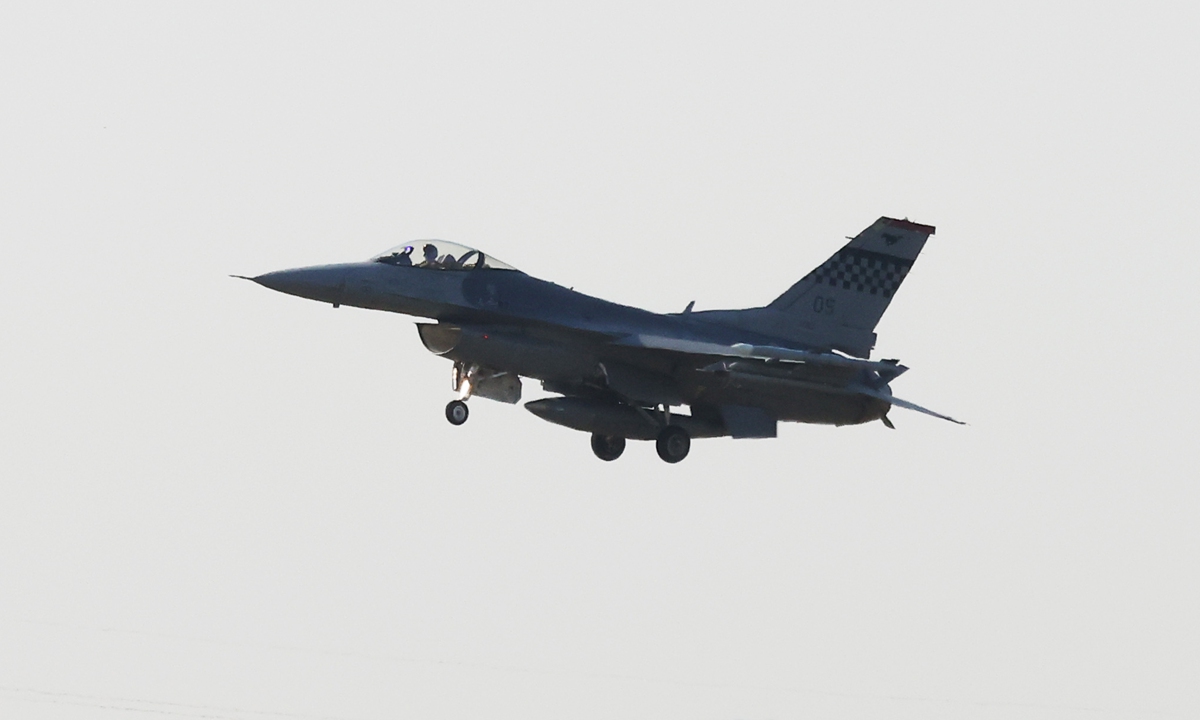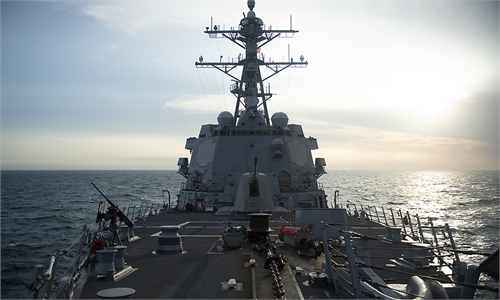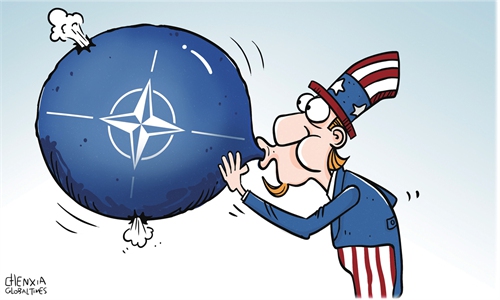Largest-scale US-S.Korea air drills in 5 years begin, could bring unpredictable consequences: experts

An F-16 fighter jet takes off from the US military's Osan Air base in Pyeongtaek, Gyeonggi, South Korea, on October 31, 2022. More than 240 US military aircraft are participating in the Vigilant Storm joint air drill. Photo: VCG
South Korea and the US on Monday kicked off their first large-scale joint air drills in nearly five years with more than 240 aircraft mobilized, including advanced stealth jets. Experts warn that it could lead to unpredictable consequences, further escalating tensions on the Korean Peninsula.
The Vigilant Storm exercise will run from Monday to Friday, Yonhap News reported on Monday.
Some 140 planes have been deployed by the South, including F-35A stealth fighters, and F-15K and KF-16 jets, while the US is dispatching about 100 assets, including F-35B stealth fighters based in Okinawa, Japan, and EA-18 electronic warfare aircraft, as well as KC-135 tankers and the U-2 high-altitude reconnaissance aircraft, according to media reports.
The Australian Air Force is also taking part in the practice for the first time, with a KC-30A multi-role tanker transport.
More than 1,600 sorties are planned during the drills.
The last exercise of this scale was held in late 2017, and the revival of the US-South Korea military drills serves as a new provocation to North Korea, with the US and Australia - extraterritorial parties not involved in regional tensions - muddying the waters, experts said.
Since the Yoon administration, South Korea has been engaging in more interactions with regional cliques such as AUKUS, Quad, and NATO, as well as with Japan, Zheng Jiyong, director of the Center for Korean Studies at Fudan University in Shanghai, told the Global Times on Monday, warning that this tendency is dangerous and will lead to unexpected reactions from the North.
"By conducting frequent drills with Seoul, Washington is restructuring its alliance chain in the Asia-Pacific region. In addition, it is testing the waters for future expansion in other fields apart from the security and intelligence sectors," Zheng noted.
The US is ramping up efforts to escalate tensions in the Korean Peninsula in order to strengthen its leadership among its allies and is increasingly preparing to militarily interfere in affairs in the Northeast Asian and West Pacific regions, observers said.
The Yonhap News said that North Korea, in response to the drills, may also try to show its own firepower with the firing of ballistic missiles or artillery shells.
"The US-South Korea drills could trigger a reaction from North Korea that could go beyond the South's expectations. It could trigger a vicious cycle of confrontation on the peninsula, which will certainly be more frequent and more intensified. The situation will be very different from what it was in the past," Zheng said.
The South Korean defense ministry said on Monday afternoon that it will review its training schedule with the US in consideration of the national mourning period for the lives lost in the Itaewon disaster, which resulted in 154 fatalities and 149 injuries, KBS reported.


